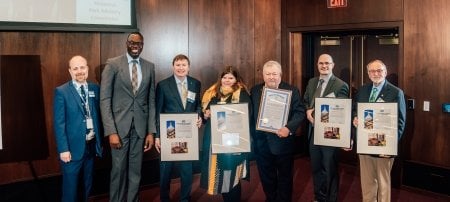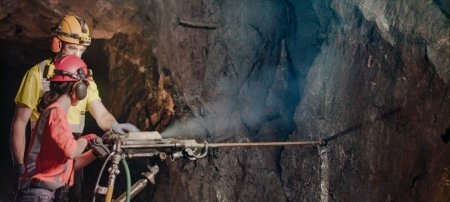Mining in Northern Climes: Whose Decision is it?

A large, international mining concern wants to operate a huge, new iron ore mine in the far north. Concerns arise over economic ramifications: how many local people will be employed? And what will be the effects on human health, the environment and wildlife?
This story is not about recent mining developments in the Upper Peninsula. A Michigan Technological University researcher is looking at the Sápmi region of Scandinavia and the possible impacts of new iron mines on the human and reindeer populations, in addition to ecological concerns.
Her research also touches on the local people having a say in the matter.
“Local communities feel that they need more input into the decisions about the mining and the reindeer,” says Nancy Langston, a social sciences professor just ending her nine-month stint in northern Sweden. “Whether it is the Sámi (the indigenous people of northern Scandinavia who often make their living as reindeer herders), commercial fishermen or people living along the local rivers, they feel that they should have a voice in land use decisions.”
As it is, the Swedish government appears to have settled for a fast-track approach to allow an Australian mining corporation (Kiruna Iron, part of Hannans) to develop new open-pit iron mines with minimal economic or environmental impact analysis, according to Langston.
This story has played out before.
“Over the years, the government has claimed that mining is a ‘higher use’ of the land,” she says. “It has prioritized mining over Sámi reindeer herding.”
Sámi continue to maintain migratory reindeer herds, and they fear that their herding economies will be threatened by new mines, she says. “They must move their reindeer to the high summer pastures and then move them hundreds of kilometers away, to lower elevation fall and winter pastures.”
These migrations include special pastures where reindeer give birth in the spring, she adds. The mothers need particularly good pastures just after childbirth, when nutritional demands are at their highest. In the fall as well, pasture quality is very important, when the reindeer prepare for winter by feeding heavily. Both fall and spring migration routes will be impacted by the proposed open-pit mines.
“The proposed mines could create a new bottleneck for the reindeer to move through, by using some 60 to 70 percent of the spring and fall pastures,” Langston says,
This squeezing out of most of their territory will actually occur for a short-term benefit: the mine is projected to operate for only 10 to 20 years. Few jobs would be created, payments into local impact funds would not be required, and there would be no guarantee of local hiring, she adds. “The Sámi herders have co-existed with reindeer for thousands of years, and they fear that the new mines would make herding impossible.”
The area already contains the world’s largest deep-pit iron mine, the Kiruna Mine, which is operated by LKAB, a government-owned firm. Few locals object to this mine, Langston says, for it offers local employment and has a long history in the region. In its early years, it was an open-pit mine, notorious for pollution.
But since the 1970s, the mining operations have moved underground and pollution concerns have lessened. The proposed new open-pit mines, however, seem to offer few of the economic benefits or environmental protections that the current mine provides, she says.
And there are other ecological concerns about an open-pit mine. The dust created can carry over to those high and low pastures and affect the lichens upon which the reindeer depend.
“The toxic contaminants can also move through the watershed,” Langston says, of another concern.
As it is, local residents fear that decisions about permitting the new mine seem to be progressing with little thought to long-term repercussions on the land, the animals and the people. Langston’s hope is that it’s not too late for local communities to have a larger voice in the permitting process. While locals appreciate the economic benefits that mines can bring, they want to make certain that their existing economies are not destroyed.
Langston’s research appeared in the March-April American Scientist magazine.
Michigan Technological University is an R1 public research university founded in 1885 in Houghton, and is home to nearly 7,500 students from more than 60 countries around the world. Consistently ranked among the best universities in the country for return on investment, Michigan's flagship technological university offers more than 185 undergraduate and graduate degree programs in science and technology, engineering, computing, forestry, business, health professions, humanities, mathematics, social sciences, and the arts. The rural campus is situated just miles from Lake Superior in Michigan's Upper Peninsula, offering year-round opportunities for outdoor adventure.




Comments